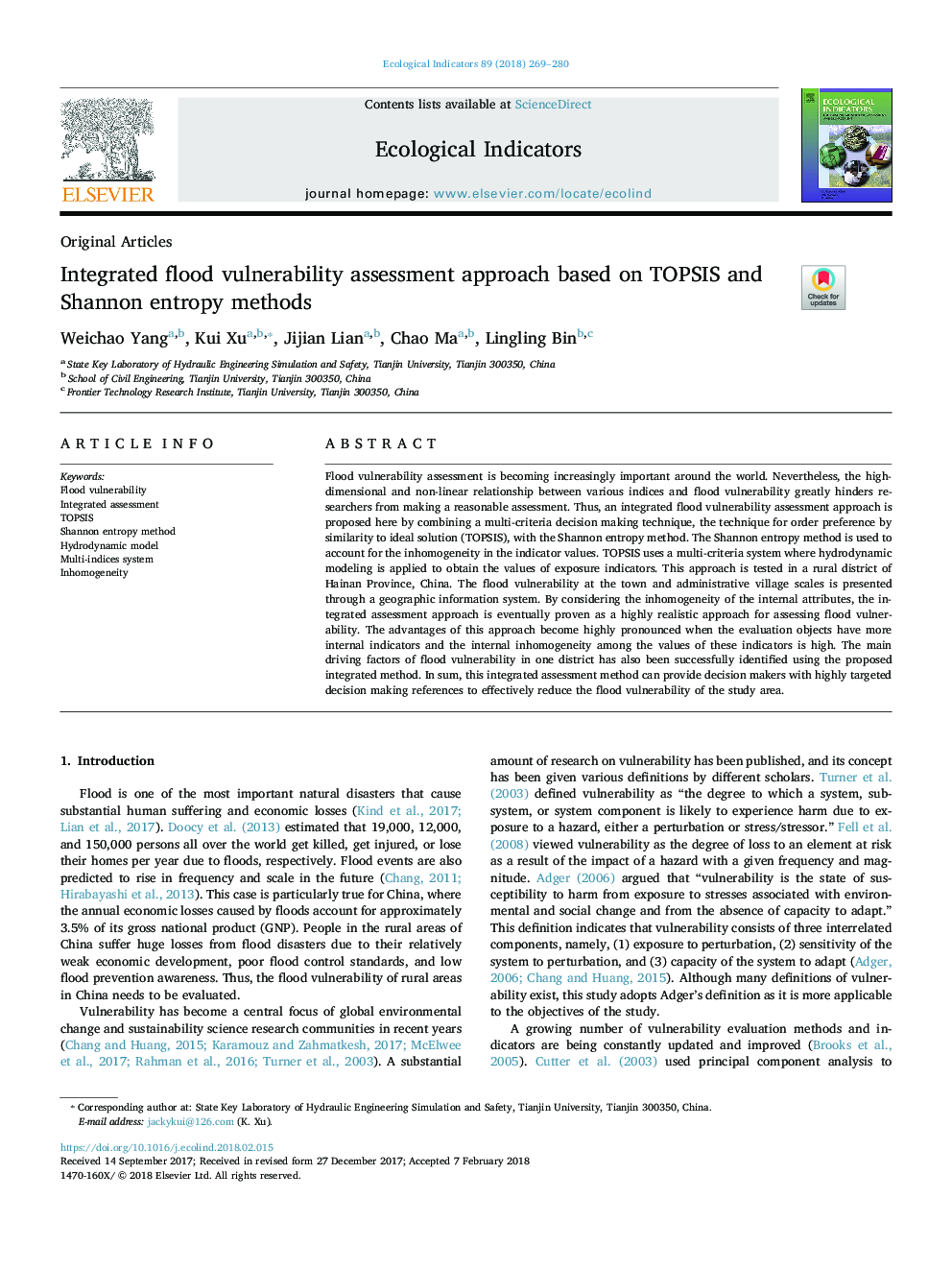| Article ID | Journal | Published Year | Pages | File Type |
|---|---|---|---|---|
| 8845462 | Ecological Indicators | 2018 | 12 Pages |
Abstract
Flood vulnerability assessment is becoming increasingly important around the world. Nevertheless, the high-dimensional and non-linear relationship between various indices and flood vulnerability greatly hinders researchers from making a reasonable assessment. Thus, an integrated flood vulnerability assessment approach is proposed here by combining a multi-criteria decision making technique, the technique for order preference by similarity to ideal solution (TOPSIS), with the Shannon entropy method. The Shannon entropy method is used to account for the inhomogeneity in the indicator values. TOPSIS uses a multi-criteria system where hydrodynamic modeling is applied to obtain the values of exposure indicators. This approach is tested in a rural district of Hainan Province, China. The flood vulnerability at the town and administrative village scales is presented through a geographic information system. By considering the inhomogeneity of the internal attributes, the integrated assessment approach is eventually proven as a highly realistic approach for assessing flood vulnerability. The advantages of this approach become highly pronounced when the evaluation objects have more internal indicators and the internal inhomogeneity among the values of these indicators is high. The main driving factors of flood vulnerability in one district has also been successfully identified using the proposed integrated method. In sum, this integrated assessment method can provide decision makers with highly targeted decision making references to effectively reduce the flood vulnerability of the study area.
Related Topics
Life Sciences
Agricultural and Biological Sciences
Ecology, Evolution, Behavior and Systematics
Authors
Weichao Yang, Kui Xu, Jijian Lian, Chao Ma, Lingling Bin,
